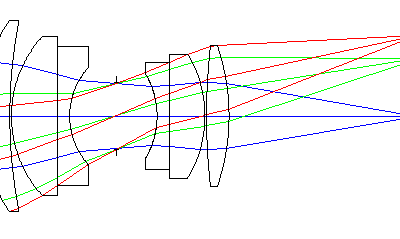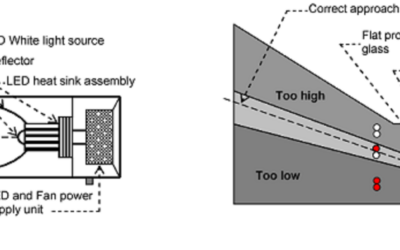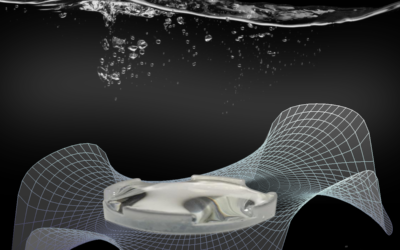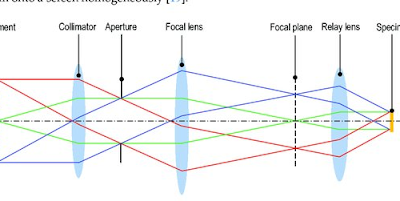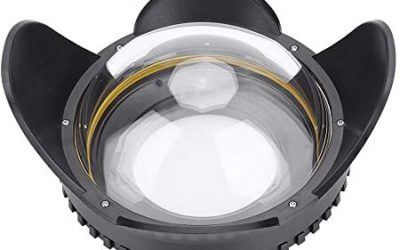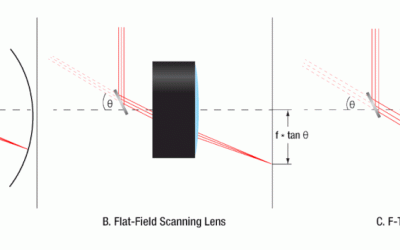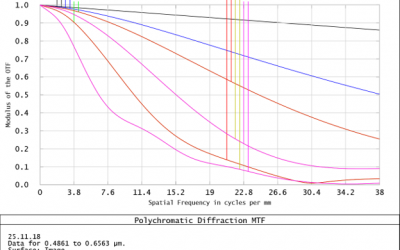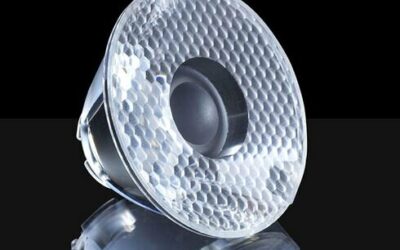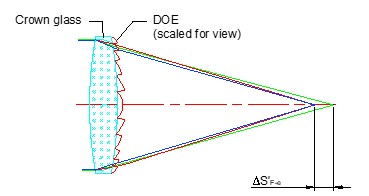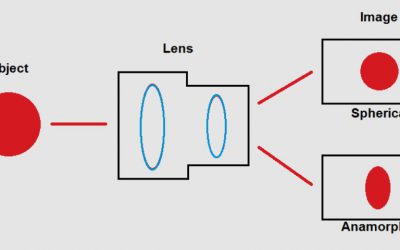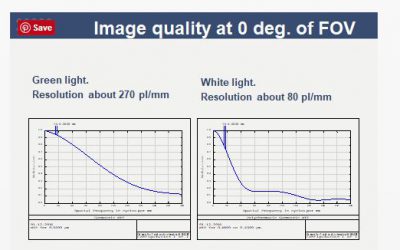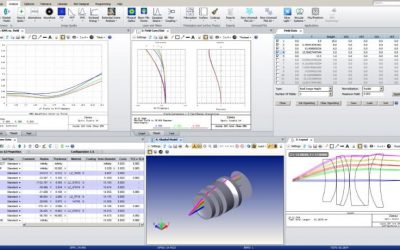One of the most common lens system designs- especially in photography- is what is called a Double Gaussian lens. There are several different configurations, and close to 90 different patents have been filed from 1936 – 2010. One of the reasons this lens design configuration is so popular is that it corrects many of the major image aberrations with a relatively low number of optical elements.
lens design
Understanding the optics behind a PAPI light
by Victor Argueta | illumination, illumination lens design, LED, optical design
In a previous article we talked about Aviation Light Optics. and discussed a runway light system called Precision Approach Path Indicator (PAPI). Now we would like to go more in detail into PAPI design and describe their design requirements. The PAPI system...
Optics in the News – June 2022
by Victor Argueta | OFH, optics
Complex Optical Components from Fluids. Researchers from the Israel Institute of Technology have developed a new technique to fabricate free-form optics by curing a liquid polymer. Traditionally, free-form optics are fabricated using complex CNC equipment that...
Conoscopic Lens Design
by Victor Argueta | illumination, illumination lens design, lens design
A conoscopic lens is an instrument that can be used to measure the angular distribution of a light source. Its use is quite different from a lens, as in photography. An image created by a conoscopic lens resembles that of a fisheye lens. That is a...
Koehler Illumination
by Victor Argueta | FAQ, lens design consulting
When designing any optical system, an optical engineer needs to consider how illumination will be used: specifically, how the illumination could affect the way the image is created. If not carefully designed, some illumination systems may create a kind of...
Fisheye Lens Design
by Victor Argueta | FAQ, illumination, lens design consulting, optical design
Anyone who has peaked through a hotel room peephole has used a fish eye lens. Usually, the fish eye lens has a very short focal length (less than 15mm for a 35mm-size image sensor), but a large field of view (FOV). The latter can be as large as...
Apochromatic Lens Design
by Victor Argueta | FAQ, lens design, lens design consulting, optical design, optics definitions
In an achromatic lens design, we optimize such that two wavelengths, usually red (590nm) and blue (495nm), focus on the same image plane. This is done to reduce chromatic aberration. In this article, we’ll talk about a similar design type called an Apochromatic lens...
Optical Design Considerations for Underwater Optics
by Victor Argueta | FAQ, illumination, lens design consulting
The design of an underwater camera lens can be challenging due to the large number of variables at play. As with every optical system design, the selection of cameras, lenses, housings, and operational parameters greatly influences the performance of the complete...
The Role of F-theta Lenses in Laser Scanning
by Victor Argueta | lens design, lens design consulting, machine vision
Introduction to f-theta Lenses In the landscape of optical systems, the introduction of f-theta lenses is an important chapter, offering a solution to the challenges posed by traditional lenses in laser scanning applications. As laser technology becomes more...
Mastering Relay Lens Design: Enhancing Optical Systems | OFH
by Victor Argueta | FAQ, lens design consulting, Zemax
Introduction Optical relays, an integral component of various optical systems, play a crucial role when the user's proximity to the observed object is limited or when specific image transformations are required. A prevalent example of this is found in relay lenses,...
How to read an MTF chart
by John | optical engineering
Understanding the purpose of an MTF chart and how to read and MTF chart is an essential skill for anyone involved in the development of products that use optics.For most applications an MTF test is the single best method to determine lens quality. In this post we will...
What is a rayset (rayfile) ?
by John | illumination lens design
A ray set is a optical model showing the path of millions of rays of light existing a source such as an LED
TIR Lenses, 3 basic design concepts
by John | FAQ, illumination
Working principle of TIR lenses: A TIR lens works on the principle of total internal reflection. When light reaches an interface between two materials with different refractive indices and the correct angle of incidence, there is refraction (bending of a light ray...
Steps for correcting chromatic aberrations in lens design
by John | optical design
In many applications of lens design, avoiding chromatic aberrations is a key performance requirement. In this video, we review some of the causes of chromatic aberrations and methods to correct them. •All optical media have dispersion, meaning the index of...
Anamorphic lenses
by OlegRybakovsky | Uncategorized
There are two lens classes that can be used in film making - spherical and anamorphic. Spherical lenses are more common and have wider applications. A rectangular film gate or imaging sensor area acts as the field stop determining both the field of view (FOV) angular...
Understanding diffractive beam splitters
by OlegRybakovsky | lens design consulting
Diffractive beam splitters A diffractive beam splitter is a diffractive optical element (DOE) used to split a single collimated laser beam into several beams with the same optical characteristics as the original beam. Beams are usually separated into 1D or 2D arrays...
What are a ‘typical’ steps in lens design ?
by John | lens design, optical design
Overview OFH works on many different types of projects, each with its unique goals and deliverables. For illustration, here is a breakdown of a lens design project from 2012. Our client produced a very low cost diagnostic microscope to view saliva with 30x...
Mastering Optical Invariants: Key Principles in Optical System Design
by VasiliKarneichyk | optics definitions
Introduction Optical invariants serve as invaluable mathematical representations encapsulating various optical parameters within an optical system. Despite the dynamic nature of optical components, these invariants remain constant, providing a stable foundation amidst...
Hiring a lens designer
by John | lens design consulting
Planning to hire a lens design partner to assist with your optical engineering program? Here are a few things to consider. Do you need a lens for illumination or for imaging? The design methods and software tools used for illumination and imaging are different. Many...
An Overview of Wide-Angle Lens Projections
by VasiliKarneichyk | lens design, optical design
There are two primary methods of image formation in lens design. Perspective projection (F-Tan Theta lenses also called Rectilinear or Orthoscopic). Equidistant projection (F-Theta lenses also called Equiangular) The Perspective projection method is most often used...
